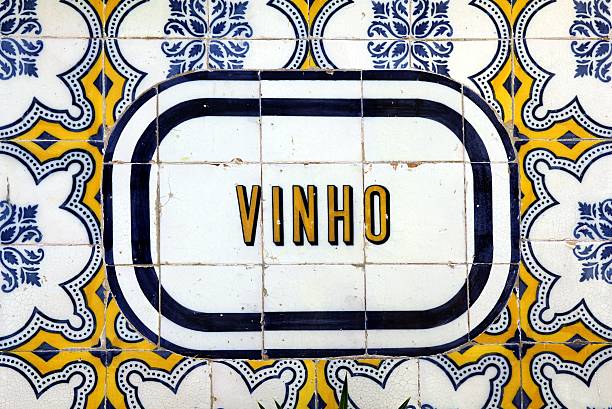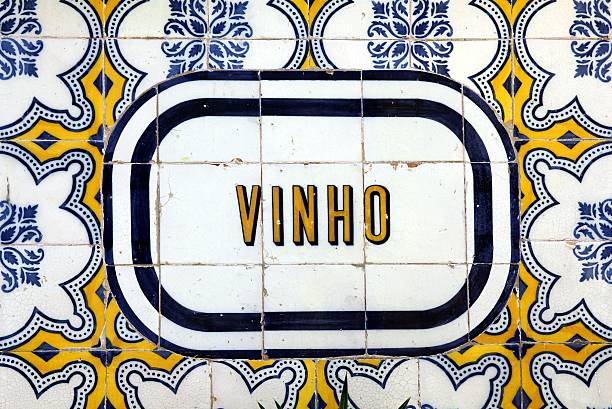By Liz Barrett, Certified Specialist of Wine (CSW)
Now is a great time to take a fresh look at the wines of Vinho Verde. While in Portugal recently, I learned how Vinho Verde has evolved over the last 10-20 years, and came home convinced that producers are turning out some exciting styles of wine that deserve a place on retail shelves and wine lists.
The light, bright, fun, and slightly fizzy white wines that are so popular, especially as summer sippers, aren’t going away. However, there is exciting white wine innovation happening with barrel-aged wines, skin-contact wines, ageable wines and organic wines that your customers will have fun discovering.
First, let’s nail down the basics of this region adjacent to the city of Porto, and sharing borders with the Douro Valley, Trás-os-Montes, Dão and Bairrada.
- Vinho Verde DOC is one of Portugal’s 14 wine regions comprising 39,536 acres of vineyards within the larger Minho IG
- There are 45 grape varieties approved for Vinho Verde (and 67 for IG Minho)
- Vinho Verde contains nine subregions, each with its own micro climate, grape varieties and vine training styles
- White wines are king, making up 85% of production. Red wines (9% of production) remain mostly in Portugal, and rosé (5% of production) and sparkling (1%) are growing
- Vinho Verde has a lofty goal of becoming known as the best white wine region in Portugal
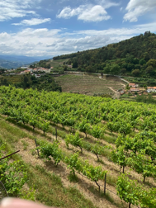 Terraced and organically farmed, the vineyards of Quinta Santa Teresa (A&D Wines) reside on the eastern edge of Vinho Verde.
Terraced and organically farmed, the vineyards of Quinta Santa Teresa (A&D Wines) reside on the eastern edge of Vinho Verde.
What is the origin of the perception of “green wine?”
This question elicits many answers depending on who you ask, but there are two answers that seem clear and truthful.
According to Wines of Portugal and the CVRVV (the Vinho Verde Region Viticulture Commission), the DO is so named because of the verdant, green land. While driving between wineries, I can attest to the eye-popping rainbow of green, from trees and shrubs to vineyards. It seems there is a vineyard planted into every last parcel of land. “A DO is not a translatable phrase,” said Dária Ferreira, North American market manager for the CVRVV and our excellent guide. “Everyone recognizes Vinho Verde for its lush, green landscape.”
Carlos Texeira, winemaker at Monverde wine hotel, remarked that the area got its name from the high acidity of the wines. “High acidity led to a perception of unripe or ‘green’ grapes,” said Texeira. “But those days are behind us. The wines have evolved since 1908 when Vinho Verde was declared a DO and the wines are more balanced now.”
A World of Wonderful Whites
There are two regarded styles of white wine in Vinho Verde: classic and premium. The classical wines are the well-known “cheap and cheerful” whites with which so many Americans are familiar. Think Gazela and entry-level Aveleda wines. These are easy-drinking, fun wines that have a bit of effervescence from added CO2, and zesty acidity balanced with lush tropical fruits and floral notes.
Premium wines are where the excitement is happening. They are largely white, but I tasted some excellent rosés and sparkling wines, too.
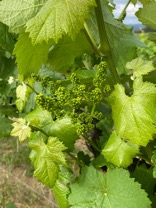
Verdent valleys with imminent bud break in the vineyards of Quinta da Lixa.
Ageable White Wines
I asked three winemakers the same question: what do you see as the top trend in Vinho Verde? Each of them told me it was “aged white wines.” Diana Monteiro of Quinta dos Arcas said, “The biggest trend I see is modernization of viticulture. People are making very gastronomic wines, often aged in oak. There’s a new wave of consumers who are seeking new types of wines.”
Dialina Azevedo, co-owner of A&D Wines at Quinta Santa Teresa said, “The history of Vinho Verde started with fun, fizzy wine with lots of sugar. In the last 30 years, it has evolved a lot. New producers are making wines differently – reflecting terroir – and showing the world that we have so much more to offer – something to satisfy every taste.” Azevedo ups her game even higher, farming organically and producing all organic wines.
When I sat down with Carlos Texeira at Monverde over a glass of his Quina de Lixa 2016 Brut sparkling wine (made of Avesso and Arinto grapes), he said, “There are three trends I’m seeing; pet-nats, wines that age gracefully and wines that represent the diversity of the Vinho Verde area.”
Avesso is being embraced by many winemakers for its aging potential. “Avesso is a rising star in Vinho Verde,” says Dialina Azevedo of A&D Wines. “It’s a very gastronomic grape, with excellent balance of acidity and fruit.”
Quina do Santa Theresa 2021 Avesso: Fermented on lees, with daily battonage, this wine is a toasty, creamy, fuller-bodied white wine with softer acidity and nice citrus and tropical fruit notes.
A&D 2020 Avesso Curtimenta: Curtimenta” means fermentation on the skins – so this falls into the Orange Wine category. It is 100% Avesso and the label was designed by Dialina’s daughter, a graphic designer. The wine is a dream, with gentle waves of mandarin orange, a subtle honey tone, and juicy stone fruits.
Rosé Wines
These pale pink wines can be made from Touriga Nacional, Espadeiro, Padeiro, Vinháo (one of a very few red-fleshed wine grapes) or other red grapes. I tasted some delightful rosés including:
Arca Nova 2021 Rosé of Touriga Nacional and Espadeiro: A pale pink, dry wine from Quinta dos Arcas that is like strawberry shortcake in a glass. With medium body, this beauty is a nice diversion for rosé.
Then there is the granddaddy of them all: Mateus. This off-dry rosé has always been beloved by the Portuguese and while U.S. consumers seemingly dismissed it as plonk years ago, they are rebranding for a comeback. Mateus is a crowd-pleaser with just enough residual sugar to appeal to a broad cross-section of wine drinkers.
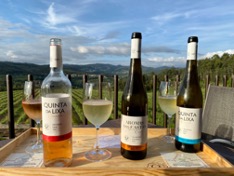
Quinta da Lixa is a prolific producer of wines including (left to right) a bright and zesty rosé of Espadeiro, a white blend of Alvarinho and Loureiro and a growing number of single-varietal wines like this Trajadura.
Sparkling Wines
The sparkling scene has been underway in Vinho Verde for 20 years, but the wines are increasing in export to the U.S. They define “affordalicious,” clocking in at under $15 retail and if they are a single varietal, they are made in the method traditionelle. (Blends can be made in the charmat style.)
Quinta das Arcas 2018 Brut: This 100% Arinto sparkler unleashes a tidal wave of lemon meringue pie, quince, and starfruit and it offers a subtle salty finish. There’s no oak on this wine and is versatile enough for any night of the week, or a special celebration.
Monverde Quinta da Lixa Brut 2016: This blend of Avesso and Arinto shows off notes of almond paste and lime zest in a bright flood of fine bubbles. The wine spent 36 months sous tirage.
Inquire with importers or distributors about these new, exciting wines from Vinho Verde. They can pair with seafoods and salads to richer charcuterie, roast chicken, and pork. Plus they offer fantastic quality for the price and offer greater variety next to white wines from France, Greece, Italy and Spain
Bonus: in these days of climbing prices, Portuguese wines remain affordalicious, offering excellent quality for very reasonable prices. Check out a few of these Beverage Testing Institute reviewed options near you.

